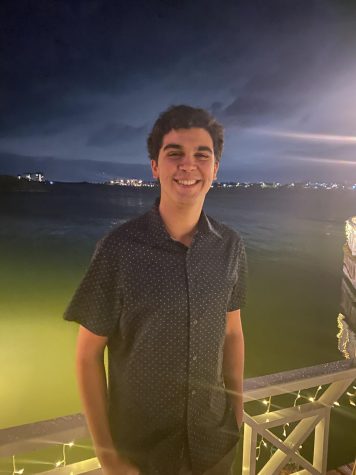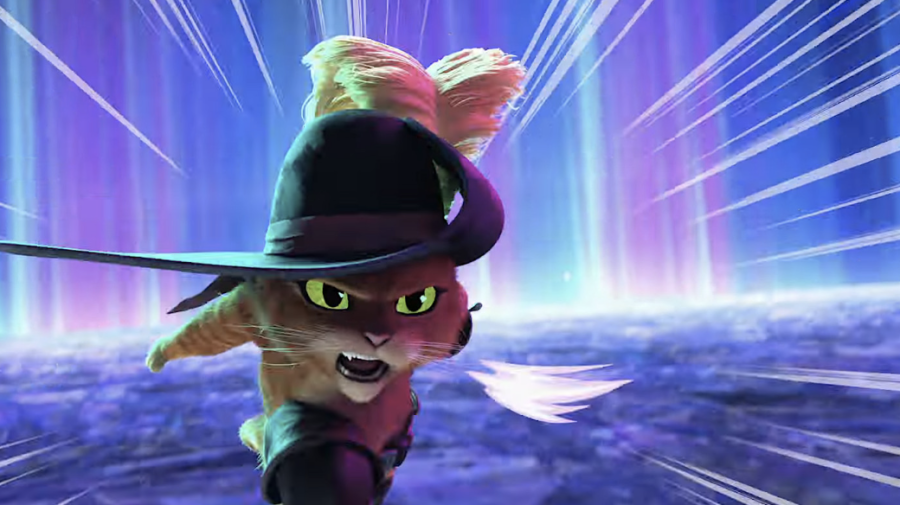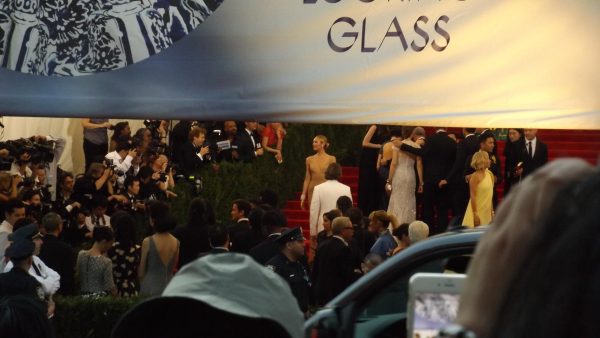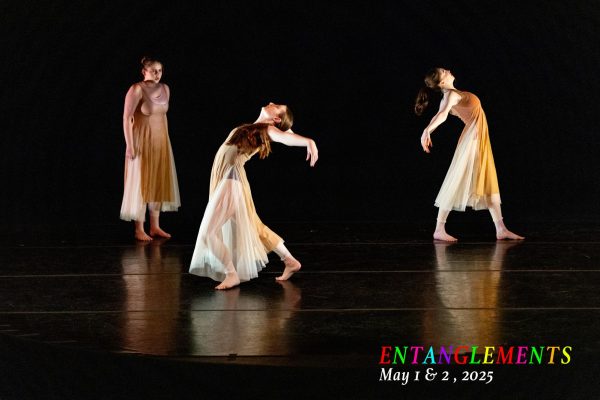‘Puss in Boots: The Last Wish’ Restored My Faith in Cinema
I know what you’re thinking. “Really? Instead of any of the other incredible 2022 Awards Season releases like The Fabelmans, The Menu, or Avatar: The Way of Water, he’s choosing to write about the smooth-talking cat from Shrek 2?” And to that, I say, you’re absolutely right (except for the part where you diminish the cultural relevance of Shrek 2). Those other films are all amazing, but they’re all getting the critical and financial recognition they deserve.
You know what keeps getting overlooked despite being the best big-studio animated film of this new decade so far? A little old film with the stylish visuals and slick action of Spider-Man: Into the Spider-Verse, the strong character arcs and self-aware comedic flair of The Lego Batman Movie, all within the subversive fairy-tale universe of Shrek. That’s right, I’m talking about Puss in Boots: The Last Wish.
Let’s begin with the basic premise of the film: there’s an enchanted forest with a magical wishing star inside, and all the characters in this film are competing to get there first so they can wish for their desired fate. An admittedly simple plot device, but it works when unpacking the motivations, insecurities, and ideologies of this dynamic cast of characters; we all want to know what they’ll wish for and why. The wish most central to the story is that of Puss in Boots, the feline master-criminal whose introduction in this film includes singing a song about how great he is, getting drunk off leche, and slaying a giant forest creature. He’s the “Macho Gato,” and yet his wish for more lives encapsulates the opposite of macho: weakness and fear. He’s wasted eight of his nine lives, and the anxiety of grappling with the newfound permanence of his actions drives his mistakes throughout the film. It ends up being one of the most authentic depictions of realistic mental health issues I’ve seen on screen, and Antonio Banderas knocks it out of the park. Not to mention that his comedic timing is absolutely impeccable.
What’s better than one Spanish-speaking badass cat? Two of ‘em. That’s right, Salma Hayek is back and better than ever as Kitty Softpaws! This time, though, the chemistry between her and Puss is more than just physical; we learn about their jaded past and their subsequent trust issues. They both live on the edge, and bringing someone else into their lives puts their loved ones at risk, especially given the enhanced theme of mortality in this film. They’re also forced to bond over the shared responsibility of protecting Perrito, Harvey Guillen’s adorkable sidekick. I can’t wait to see more of this lovable trio in future installments of the Far Far Away Cinematic Universe.
I’ve held off for long enough; it’s time I break the news about who is by far the most shockingly sublime aspect of this film: El Lobo. Finally, Puss in Boots has met his match. You see, in the first film, Puss had to go against Zach Galifinakis’ Humpty Dumpty, a villain much less physically intimidating than Puss, but who could theoretically outsmart him. El Lobo, masterfully portrayed by Wagner Moura, an actor most known for playing Pablo Escobar, is the perfect foil for Puss. Like Puss, he’s also a Spanish-speaking animal well-versed in blade combat, but he’s always one step ahead. He’s stronger, faster, and smarter than Puss, memorizing all of Puss’ insecurities and reciting them to him in his eerily deep voice, taunting him with his devious red eyes. He also has the creepiest villain theme in any Dreamworks movie. Watching him grace my screen was an absolute delight. And without spoiling anything, the third-act twist about this character is *chef’s kiss*. I’m sorry I have to shoehorn my off-topic personal vendetta into this review, but El Lobo is exactly what we should have gotten from Gorr in Thor: Love and Thunder.
And don’t even get me started on the action. Into The Spiderverse walked (in terms of popularizing a 2D aesthetic in 3D animation) so this film could pounce, flip, and cartwheel. Every motion is fluid, every battle is swift, and every thrilling set piece tops the stakes of the one before it.
But don’t just take it from me; take it from two juniors who didn’t expect to have just as much fun as they did. Junior Zoe Larsen “loved the action and the combination of classic nursery rhymes [she] read as a kid.” She brings up an especially compelling point about the nursery rhymes.
The Shrek franchise is known for adapting fairy tale creatures with a comedic twist to create intriguing villains or allies; Fairy Godmother as the CEO of a Wish Factory, The Big Bad Wolf as an experimenting cross-dresser, or Mother Goose as a giant Kaiju. This new installment masters this technique with the introduction of Goldilocks (Florence Pugh’s best 2022 role, sorry Don’t Worry Darling) and her three bears, bounty hunters tracking down Puss who learn the true meaning of family along the way.
And while one might think that across this six-film franchise, they’ve scraped the bottom of the nursery-rhyme-character barrel, they managed to whip out one of their greatest adaptations yet, from a nursery rhyme I’d never heard of: Little Jack Horner. Look up his nursery rhyme if you’re unfamiliar, but in this film, “Little Jack Horner” is “Big Jack Horner,” a crime boss who wants all the magic in the world for himself. John Mulaney plays him as a goofy villain who contrasts perfectly with Moura’s more serious antagonist without stealing too much of the spotlight or boring the audience whatsoever. Imagine Lord Farquad on steroids.
Speaking of serious, junior Belle Krueger believes the film to be “good content for many ages” that includes “heartfelt messages about appreciation and love.” Belle, I couldn’t agree more, particularly in today’s climate of animation. We live in a world in which Bob Chapek, the former Disney CEO who was thankfully fired last year, said that after “audiences put their kids to bed at night after watching Pinocchio, Dumbo or Little Mermaid, then they’re probably not going to tune into another animated movie; they want something for them.” He essentially implied that animation should be enjoyable only for kids, and not adults as well, meaning there should be no nuance or depth in any of these supposed “kids’ movies.” It’s probably why Disney/Pixar’s last few films, like Lightyear or Strange World, were such steaming piles of turd.
If you discard your visual medium as something beneath adult standards, you won’t take the time to (as Belle would say) “appreciate and love” your work, and your final product will be evidence of your laziness. This film spares no expense in giving their viewer the most visually engaging, emotionally compelling, two-hour joyride they could ask for.
Puss in Boots: The Last Wish isn’t just fun; it’s important. It demonstrates care and passion for the valuable storytelling medium of animation, both on and offscreen. We should never have to settle for garbage, or even average content, just because it’s being spoon-fed to us by the most successful animation studio. This film is proof that animation should never be “just for kids,” and yet should still be able to bring out the child-like wonder and emotional weight in even our most fearless heroes.
If DreamWorks can bring the same astronomical level of quality they gave this spinoff to the OG franchise, then I might have to say the words I thought I’d never utter … Gimme Shrek 5, baby!

Cole Hanover ('23) is a senior at Latin and has written/illustrated for The Forum since 2021. He has always read The Forum throughout his high school...





















































Mr. Joyce • Feb 2, 2023 at 8:17 am
“Gimme Shrek 5, baby!” — LOL!
Vivian Lee • Jan 19, 2023 at 9:40 am
This is simply superb!